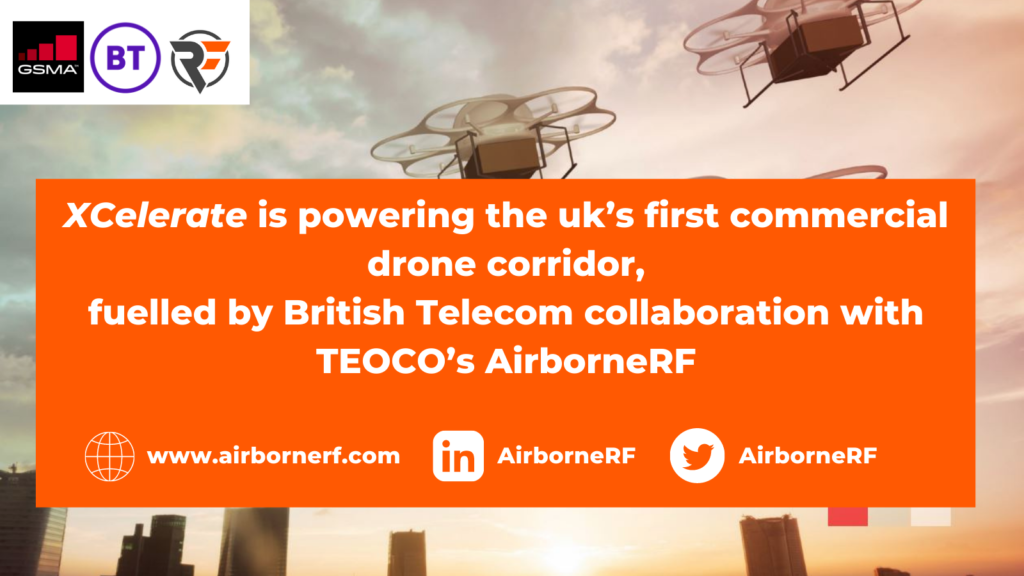Fuelled by British Telecom collaboration with TEOCO’s AirborneRF, Project XCelerate, a Future Flight Challenge backed by the UK Government’s Industrial Strategy, will establish the UK’s first commercial drone corridor in open and unrestricted airspace.
British Telecom’s EE mobile network, the most extensive and fastest network in the UK, and the trusted provider behind the critical Emergency Services Network (ESN) will ensure that a safe commercial drone corridor can be established with optimal mobile coverage at low altitude.
The BT led consortium will start conducting flight trials to showcase how drones can provide value across various verticals, including healthcare, emergency services and critical infrastructure. For example, Project XCelerate will explore how blue-light organizations can use drone technology to speed up response times for time-critical incidents, helping to improve the chances of survival whilst also reducing costs and driving efficiencies for the emergency services.
4G and 5G play a pivotal role in powering drone services across multiple verticals, ensuring adequate connectivity and enabling, amongst other things, command and control capabilities and the live streaming of images, video, or other data captured by sensors. This allows the operators to review this information as the drone is in flight and take appropriate actions.
A critical project requirement is the use of standards, such as the Network Coverage Service standard developed in the Aerial Connectivity Joint Activity by the Global UTM Association and GSMA stakeholders to ensure interoperability and reusability of the project results in other activities worldwide.
To ensure the highest level of safety and security for the operations inside the drone corridor, British Telecom is employing TEOCO’s AirborneRF solution. This software ensures a critical communication channel and provides a series of safety-critical services for drone operators. It ensures adequate and continuous cellular coverage for every flight by assuring minimum performance-based requirements within the continuously changing cellular infrastructure. It also alerts the UTM provider in case of service degradation to identify safer flight paths for the drone operators. Another critical service offered to drone operators is determining the ground risk of each flight as a function of the population density determined using network analysis. Drone operators and UTM providers will use this information to reduce the risk for third parties on the ground and ensure that their Specific Operations Risk Assessments (SORA) are performed quantitatively with the best possible data sources. An actual, automated risk assessment process according to the stringent European regulations is one step closer to becoming a reality.
Read the entire case study here.
Feel free to contact us at AirborneRF, and please do revisit our blog soon for the latest news.
Remember to follow us on LinkedIn and Twitter to be the first to hear AirborneRF’s news and updates.

